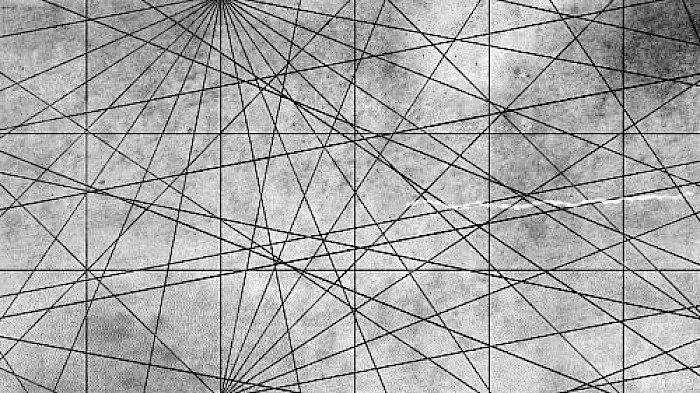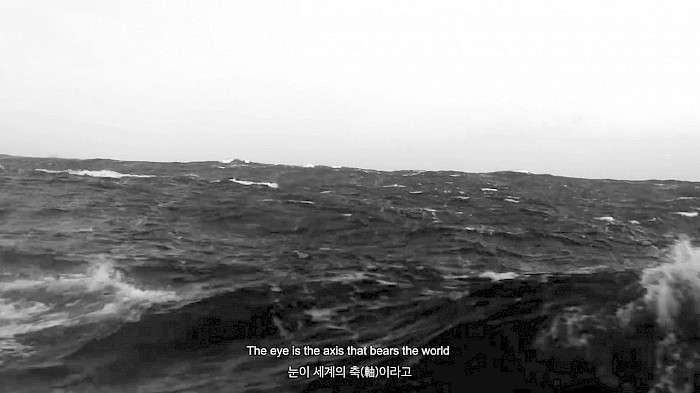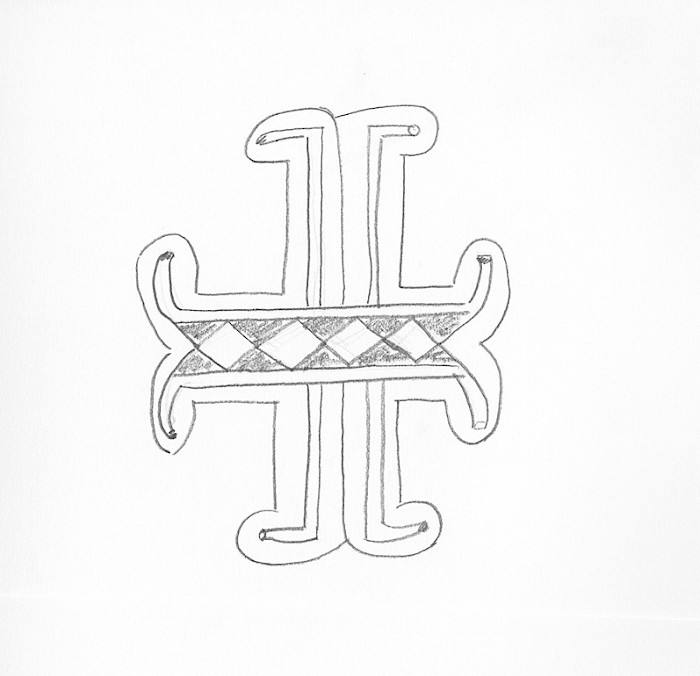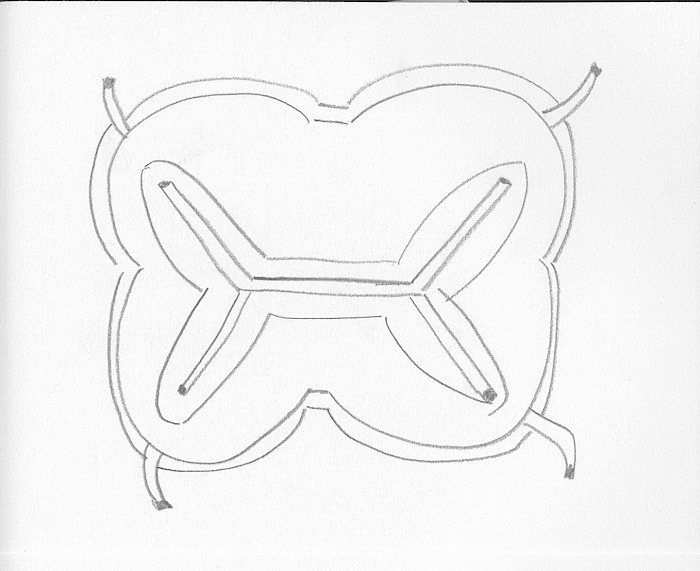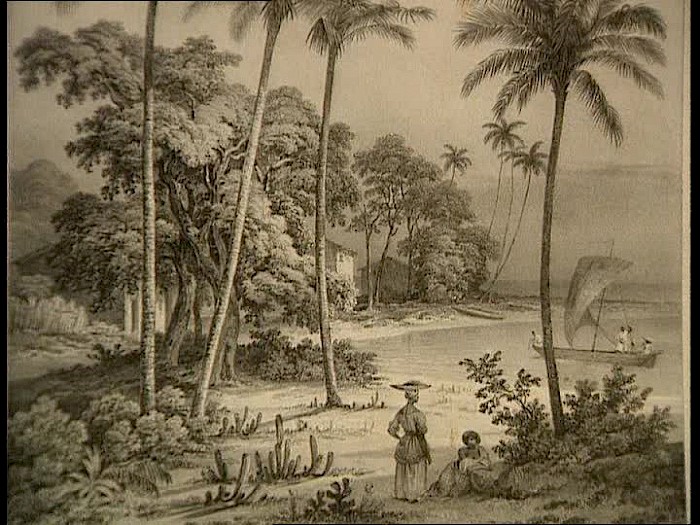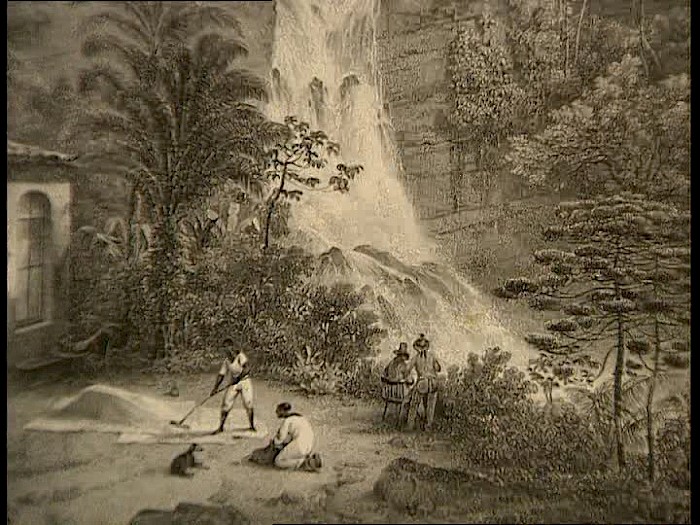Shown in Compétition #5.
Synopsis
The video narrates the journey of the westward bound European conquerors en route to the East Indies. Upon discovery of the Americas, they knew next to nothing about this new world and mistakenly named it « Western Indies ». Henceforth local inhabitants would be named Indians. The video’s soundtrack features a Native American tune (by the Kali’na people of French Guiana and Suriname) as sung in Tamil (a language from Southern India). The tale undergoes a slow transformation: now it’s not so much a journey from East to West as it is an inner quest.
Text from the selection comitee
East/West, geographical journey/internal journey, East/West: Daphne Le Sergent’s films and videos bring together, short-circuit, mental and cultural data from various horizons to make them interact. Guided by a question she asked herself a few years ago, how do artists “who are neither European nor North American, and who have not {experimental forms} integrated them as the slow precipitate of social, economic and political evolution” use them? Voyages dans nos Indes intérieures answers this question in a Brechtian way, a little distanced, in the musical mode of the Opéra de Quat’sous. Tamil songs mingle with very sophisticated black and white graphic plans. But the tale cracks into colorful splashes when we see hands kneading the earth, the material. The keys are not useful as the journey is “spinning”.
Translation made by the translator www.DeepL.com/Translator
– R.B.
How did you think about Voyages dans nos Indes Intérieures? And what was your creative process?
This video work was produced as part of two residencies at CARMA in Mana (French Guiana) in 2017 and 2018. The work was produced for the CARMA exhibition “Entre 2 Mondes”. The purpose of this exhibition was to re-imagine the meeting between European sailors and Amerindian populations after the discovery of the Americas. I sought to question the different stakes of the line in the Kali’na Amerindian drawing and the European cartographic or scientific (botanical) drawing. The assembly was finalised in 2020.
For this project, I wanted to have total control of my subject. The question of how to say what I wanted to say quickly came to me. I wanted to convey my thoughts through the images, but I was already forgetting that images also speak. All the editing work consisted in articulating these different elements that make up the film. And this, so as not to be in a simple discursive illustration, but also to propose a plastic exploration. I tried to explain in an intelligible way this civilisational encounter between Amerindians and Europeans and to make one feel the distance from the graphic and perceptive systems of these peoples. I therefore opted for rather illustrative segments and reserved my formal research for smaller sequences, in order to preserve the subtlety of the discourse in the alternation between the intelligible and the sensitive.
This led me to layer my video by layer. First of all, there is this movement that starts from the encounter between the Amerindians and the Westerners, and comes to question the self and the perceiving subject. But there is also a second movement, whose origin is the superficial layer of the Western model, concentrated on the mimetic representation of the world (by contour, for purposes of sampling, classification and hierarchisation), which comes to oppose the interiority of the Amerindians, seeking to express the deep memory of being through a kinaesthetic intensity of existence through the body, through dance and walking in particular. It is thus from these opposing movements (between Europe and America, exterior and interior) and from this layered structure that Voyages dans nos Indes intérieures takes shape.
How has your work evolved compared to your previous project La Géopolitique de l’oubli?
Whether in La Géopolitique de l’oubli or in Voyages dans nos Indes intérieures, the question of dissociation is omnipresent, although it is dealt with differently. I didn’t use a split screen in this film as I did in La Géopolitique de l’oubli or Paysage Liminaire. In Voyages dans non Indes intérieures, the dissociation blends into the subject and what is shown is more through discourse, in the dichotomy between indigenous song and the silent theoretical reflections that appear in the subtitle; but also in this opposition between Amerindians and Westerners. This recurrence is perhaps what makes style in me.

